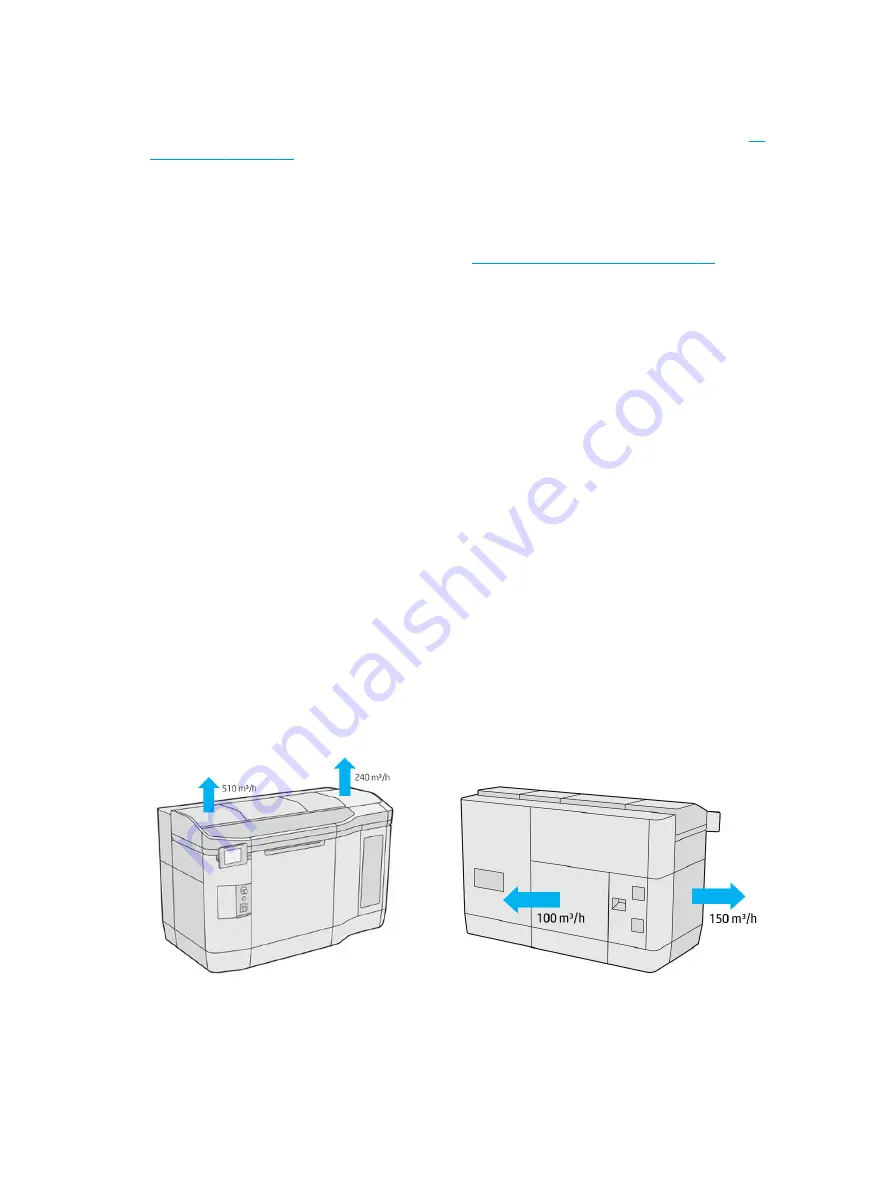
capture of airborne contaminants near their source of generation, and subsequently allows their efficient
removal from the building through contained, and relatively low-volume air flow. A workspace health and safety
professional can provide guidance on the design and use of this auxiliary ventilation equipment. See
.
Air conditioning
In addition to fresh air ventilation to avoid health hazards, consider also maintaining workplace ambient levels by
assuring the climatic operating conditions specified in
Environmental specifications on page 11
to avoid operator
discomfort and equipment malfunction.
Air conditioning in the work area should take into account that the equipment produces heat. Typically, the
printer's power dissipation without local exhaust is in the range of 9 kW to 11 kW (30.7 kBTU/h to 37.5 kBTU/h).
If local exhaust is installed, the power dissipation into the room decreases to 3 kW (10.2 kBTU/h).
Air conditioning should meet local environmental, health, and safety (EHS) guidelines and regulations. Follow
these instructions carefully when designing the air-conditioning installation and placing printers in the room:
●
The air-conditioning units should not blow air directly onto the printer.
●
The air-conditioning splits/diffusers should be placed at least 2 meters away from the printer surfaces and
covers.
●
The air-conditioning splits/diffusers should be rotational, avoiding direct flows and laminar flows. The air
from the air-conditioning system should be properly mixed with the existing air in the room before reaching
the printer, and should not flow directly onto the surface of the printer. Take special care with air that
enters the cooling system at the back of the printer: air at that point should always be within the operating
temperature range.
●
The air-conditioning splits/diffusers should not be located directly above the printer, as any condensation
at the diffuser could fall directly onto the printer and its electrical components.
●
If you have a humidifier, do not place it next to the printer, to avoid excessively high humidity in the air
inlets.
●
If you intend to use an extractor hood, take into account the expected air flow around the printer
(illustrated below).
ENWW
Air conditioning
13
















































